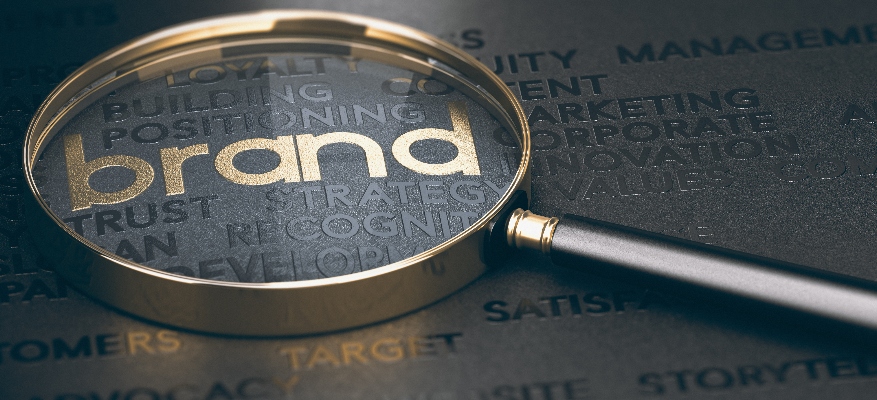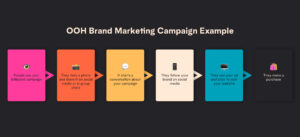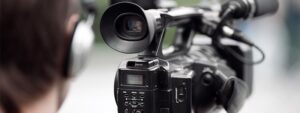Brand awareness marketing can be the difference between someone choosing your brand, or being swayed by your competitors.
Some of the most established and long-lasting businesses are long-lasting because they invest in Brand Awareness Marketing.
Think of a fizzy drink you might buy from a shop or restaurant. I bet I can guess it correctly in just three attempts.
You might not even like this drink or ever purchase it, but there’s a reason that this particular drink popped into your head when I mentioned a fizzy drink. That’s because these beverage giants have perfected the art of their brand awareness marketing so they’re the first company you think of.
So, how do they do it?
In this blog, we’ll take you through what Brand Awareness is, how brands can use Brand Awareness in their omni-channel marketing strategies, and how you can craft your own Brand Awareness marketing strategy.
We’ll also draw on how luxury brands use Brand Awareness marketing to achieve their goals and what you can learn from their strategies to implement an effective strategy in your own marketing channels.

What Is Brand Awareness Marketing?
Brand awareness marketing is a strategy where companies promote their whole identity, values and who they are, rather than promoting specific products, services or elements of the business. It allows brands to amplify their key messaging and reinforce who they are as a company.
Note: not all brand awareness campaigns have the end goal of generating sales or leads. Instead, they act as one element in a range of multi-channel campaigns that all work together to help businesses achieve their ultimate goal.
You’ll interact with many brand awareness campaigns on a regular basis and most likely not realise. It’s the job of the campaign to keep the brand sitting there in your mind, so when you do think about a subject where that particular business is related to it, you think of that specific brand.
For example, you might see a creative billboard for a new vacuum cleaner on your daily commute to and from work. You’ll most likely forget what the billboard ad said, however, if the campaign has done its job, the next time your vacuum breaks and you need to purchase another one, the first brand you’ll think of will be the one you see on the billboard every day.
Ultimately, the goal of brand awareness marketing is to build long-term recognition and trust, ensuring that your brand is the first choice when a consumer is ready to buy.
Types Of Brand Awareness Marketing Campaigns
There’s lots of campaign types that businesses can use to increase their brand awareness. Ultimately, it depends on the goals of the business as this will form the core of the strategy.
Since brand awareness is quite a broad term, it’s important to be clear on what you want to achieve from this campaign.
Make sure to always set out clear goals and have key metrics so you can measure the success of the campaign.
Depending on the type of campaign you choose to execute, these metrics can be difficult to track, but this is where you look at your omni-channel marketing to understand how effective your brand awareness campaigns have been.
Campaign Type #1: Social Media
The first type of brand campaigns we’ll look at is social media. This is the most popular channel that businesses use to help with brand uplift and engagement, with brand new companies solely using social media to launch and grow their new business – also known as Social Native brands.
You can use social media brand awareness campaigns to grow your following, expand your reach, create topical conversations around your brand, and encourage brand interaction.
Campaign Type #2: PPC
Social media isn’t the only digital platform that can help grow your brand. PPC (Pay-Per-Click) campaigns such as Google Ads is another popular choice for brands to increase awareness to prospective customers.
For example, you can craft a YouTube campaign that targets your key audiences when they’re streaming other videos. This helps to reinforce the brand and keep your business at the forefront of their mind, especially when you’re interrupting the video they’ve chosen to watch, it’s an effective platform to use to elevate your brand further.
Campaign Type #3: OOH Campaigns
However, if you have a physical location, like a shop, hotel or restaurant, then OOH Campaigns can be effective for elevating your brand. OOH, also known as Out-Of-Home, are campaigns that you physically see when you’re out and about. These can range from billboard campaigns to pop-up events and are still being heavily utilised from brands across many industries to increase brand awareness.
We’ll dive into this more in the next section.

Brand Awareness Campaigns and the Fashion Industry
Whenever we talk about successful brand awareness campaigns, there are a few sectors that always seem to make headlines for their creative and innovative marketing campaigns.
One of those areas in the fashion industry.
From high street, to luxury, fashion brands invest a significant amount in their brand awareness campaigns to reinforce brand loyalty, increase new customer acquisition and to keep people visiting their shops or websites.
Let’s take a deep dive into H&M’s recent brand awareness campaign.
Already a global high street brand, H&M has experienced a shift in their brand ethos during 2024, after appointing a new President and CEO of the H&M group in January. They wanted to focus on the high-end high-street market, focusing on creative, yet high quality clothing that also spoke to their young, fashion-forward audience. They were also gearing up to launch their new flagship store in Times Square.
So how were they going to communicate their new vision for the brand without alienating their loyal customers and create hype around their new flagship store opening?
They threw a free concert.
In November 2024, H&M collaborated with Charlie xcx, fresh off her sell-out Brat Tour, and took over Times Square. H&M members were notified 30 minutes before the performance so that they could make their way to Times Square to get the best spot. The singer held a free open-air concert in the iconic NYC location whilst wearing custom pieces from the beans new Holiday Collection.
So how did this campaign help H&M communicate their brand values and increase awareness for their updated brand?
Firstly, since Charlie xcx is one of the top artists of 2024, thousands of people attended the concert and shared the event on social media. This creates a social buzz not only about the concert, but about H&M.
Secondly, H&M members were the first to know about the event, which reinforces brand loyalty as H&M put their customers at the forefront of the brand – something that is quickly deteriorating in the fast-fashion and high-street world. Also, as H&M were also promoting the opening of their new Times Square store, they will have seen an increase in foot traffic for their new store.
Finally, because Charlie xcx was dressed in pieces from the new collection, people will have either shopped the outfit she was wearing in-store or online, naturally translating into sales for the brand.
H&M conquered the omni-channel brand awareness campaign, clearly showing they understand their target audience, bringing meaningful and memorable experiences to their members and differentiating themselves from the rest of the highly saturated high-street fashion market.
How To Craft Your Own Brand Awareness Strategy
Now we’ll take you through how to build and define your own brand awareness strategy. Remember to keep your brand and its values at the core of the strategy to maximum effectiveness.
Step 1: Define Your Goals
Before you start planning your brand strategy, you first need to set out your campaign goals.
For example, your main goal might be to:
- Increase your following on social media platforms
- Increase foot traffic through your physical stores
- Showcase your rebrand to the world
From your goals, you can then define what key metrics you’ll use to determine the success of your campaign.
Step 2: Clarify Your Metrics For Long Term Success
As we mentioned earlier, brand awareness campaigns can be quite abstract, so some goals may not have clear metrics that you can use for measuring success.
Just like the H&M campaign, it might not be clear right away if the free Charlie xcx concert in Times Square was a success. However, the aftermath of shop visits, purchase of the new collections and social media activity will provide H&M with clear indicators on the success.
This is where you need to look at your other marketing channels to understand how the campaigns are performing. For example, if your goal is to drive new customers to your website, then you can use Google Analytics, and New Visitors or New Purchasers as key metrics to understand the campaign’s performance.
Step 3: Keep Your Customer Journey At The Core Of Your Campaign
You also need to see how your brand awareness campaign fits into your customer journey. This is also when your other marketing channels can help to see how people are moving through your full marketing funnel.









